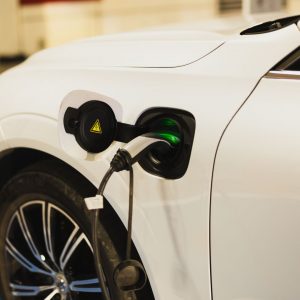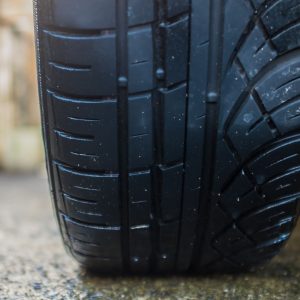- 22nd September 2023
Electric vehicles: The solution or a new threat?
A recent article in The Guardian provided an interesting insight into some of the environmental challenges we continue to face, even with the positive changes being introduced to reduce the use of fossil fuels. A lot of hope has been put into electric vehicles being the solution to many of our problems around reducing environmental impacts, however, this mode of travel still has some down sides, which aren’t so well known.

Time to take it seriously
Electric cars are heavier than their counter-parts and this leads to more tyre particles being generated, which have harmful effects. Sir Chris Whitty, England’s Chief Medical Officer and the government’s Chief Medical Adviser has told MPs to start taking the health risks from vehicle tyre wear seriously.
Whilst improvements in emissions from petrol and diesel vehicles, along with the shift towards electric cars, are reducing the extent of dangerous pollutants such as nitrogen oxides, not enough is known about the potential impact of car tyre and brake particles pollution. This is mainly due to the fact that, previously, they contributed such a small amount to the overall pollution caused by petrol and diesel transportation.
Sir Chris believes that whilst a total move to electric vehicles would almost completely remove the threat of exhaust pollutants, it would not solve the problem of the particulates that come from tyre and brake wear. However, a feature of many electric vehicles is regenerative braking, which greatly reduces brake friction, and therefore, in this way, they are much better for the environment and our health than petrol and diesel cars.
The increase in risk from electric vehicles unfortunately, comes from the greater weight of this type of transportation; EV batteries are so much heavier. This increases wear on tyres and therefore the amount of tyre-based particles will likely increase. Not to mention the fact that heavier cars will take a toll on our roads and car parking garages, not originally built for this weight. Most worryingly, road traffic accidents are also more likely to result in fatalities, the heavier the car.
How does this affect us?
Recent studies have raised concerns about the danger to health from tiny particles produced by tyre wear, as well as from road surfaces and marking, which are now notably greater than those coming from exhausts. In the article, Sir Chris goes on to explain how pollution is linked not just to a plethora of illnesses, including respiratory problems, heart disease, strokes and even dementia.

We’re all being encouraged these days to walk or cycle as much as possible (known as ‘active transportation’) but should we be potentially exposing ourselves to these pollutants? Sir Chris believes that, even in our most polluted areas, the overall physical and mental health benefits far outweigh the risks that the pollutants pose.
“Even in the most polluted parts of our cities, if you’re going in for active transport, you’re still improving your health compared to if you were sat on a bus or behind the wheel of a car.”
Click here to read the full article.
What does the future hold?
The future is, inevitably, electric, but EVs don’t appear to be the answer to all our problems. This is why investment into a balanced transportation system is so crucial, as we continue to experience growth in population and demand.
If you’re interested in further exploring how our clients are continuing to improve our infrastructure and engineering capabilities, or you’re a client looking to hire in these markets, reach out to our team of specialist recruiters via the button below.

